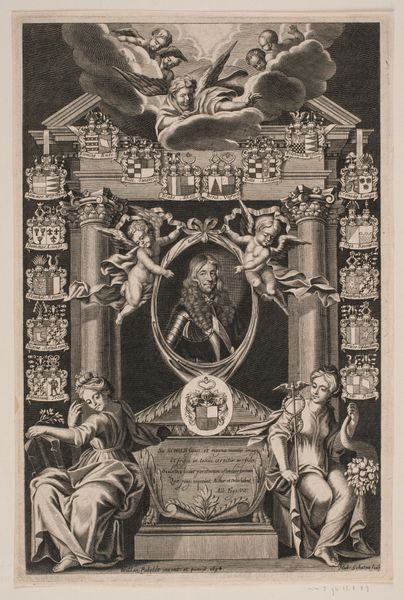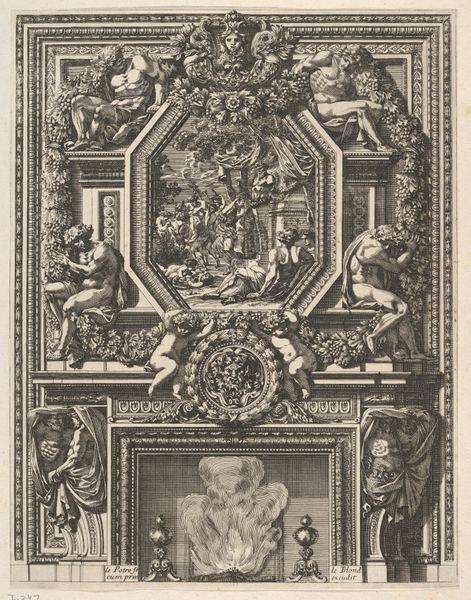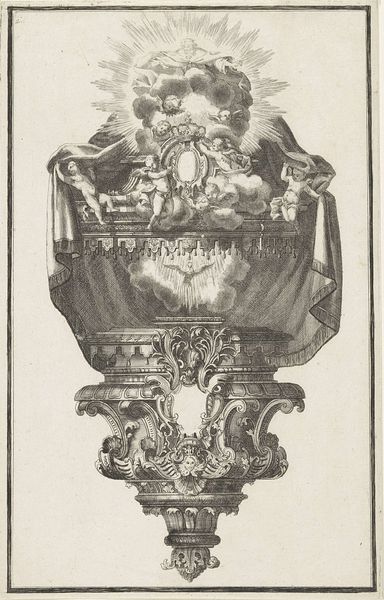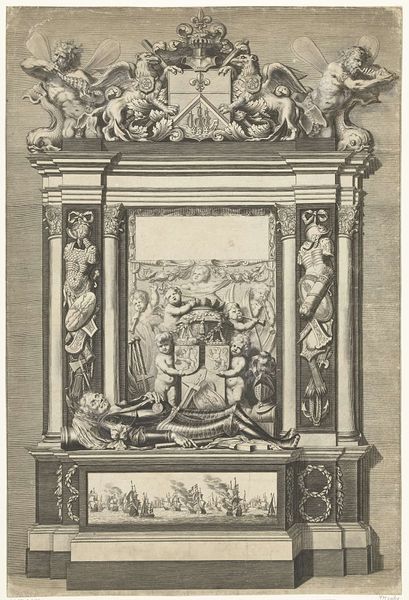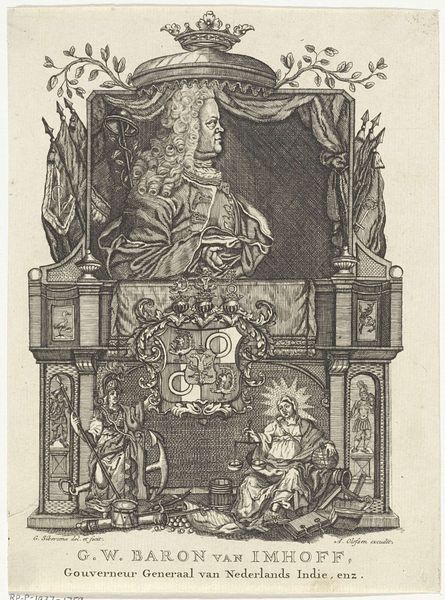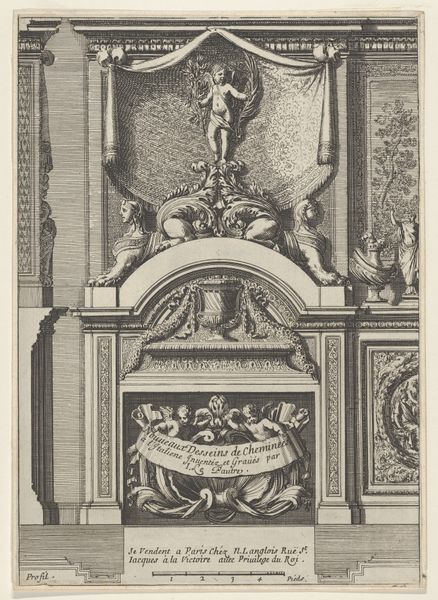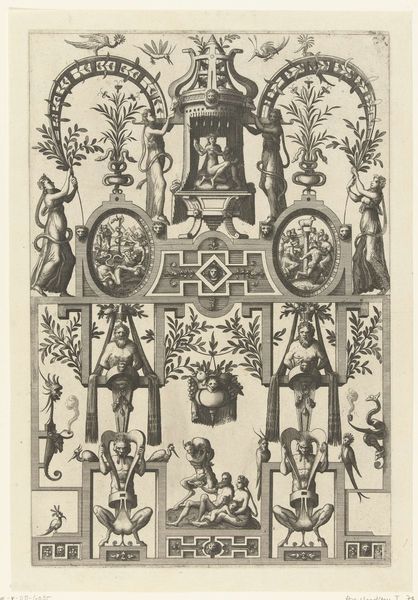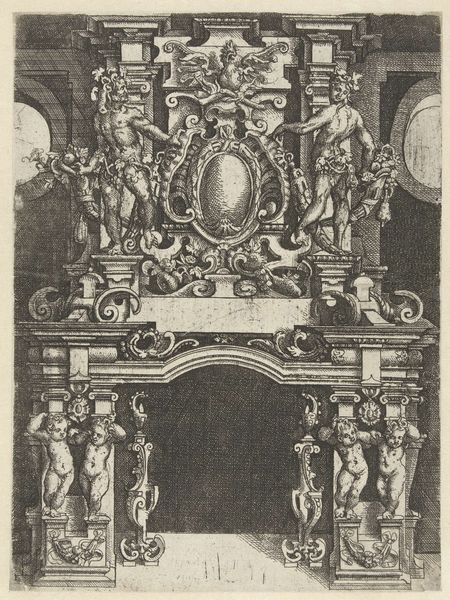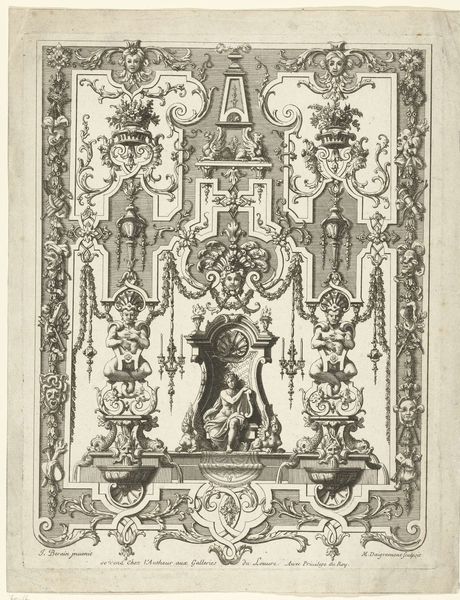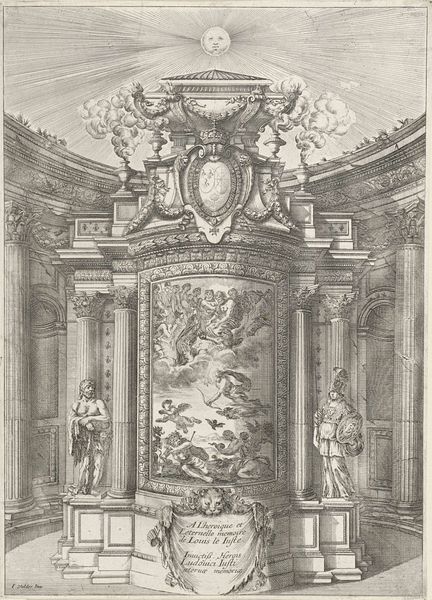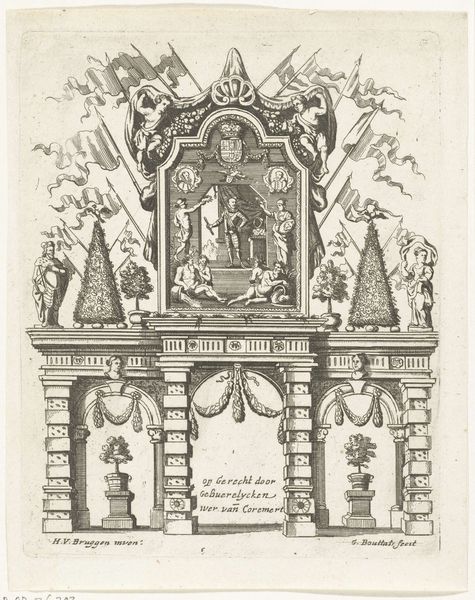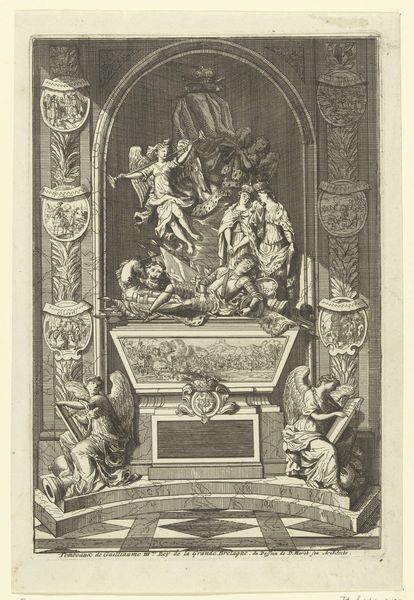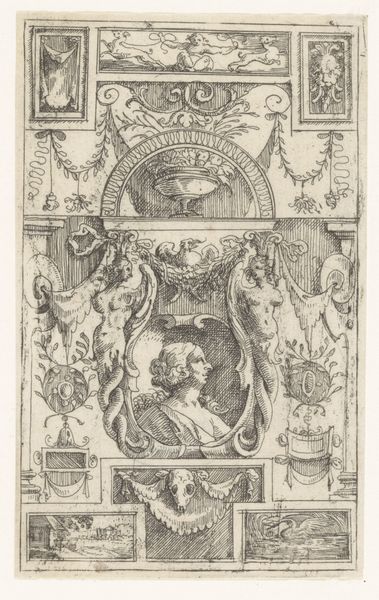
Triomfboog met scènes uit het leven van de Heilige Johannes van Capistrano en Paschal Baylon 1691
0:00
0:00
gasparbouttats
Rijksmuseum
print, engraving
#
baroque
#
pen drawing
# print
#
pen illustration
#
old engraving style
#
history-painting
#
engraving
Dimensions: width 463 mm, height 573 mm
Copyright: Rijks Museum: Open Domain
Curator: Here at the Rijksmuseum, we're looking at a 1691 engraving by Gaspar Bouttats entitled "Triumphal Arch with Scenes from the Life of Saints John of Capistrano and Paschal Baylon". Editor: It's quite ornate, isn't it? Immediately striking, the intricate linework, the sheer density of figures and symbols... it feels incredibly theatrical, almost overwhelming in its detail. Curator: Indeed. Triumphal arches, often erected for civic celebrations or to honor military victories, also played a role in religious life. This print likely served as a commemorative piece for the canonization cause of these two saints, commissioned during the reign of Pope Alexander VIII. The imagery serves a very specific political purpose: demonstrating the strength and legitimacy of the Catholic church. Editor: And that's achieved partly through the material itself. The fine lines of the engraving process lend themselves to this kind of incredibly detailed imagery. You could reproduce this and circulate it widely, disseminating the message across different social strata and locations. Consider the labor that went into this single printed sheet and then how easily its message proliferates. Curator: Absolutely. Bouttats cleverly employs the print medium to create something that emulates the grandeur of large-scale triumphal arches, which would typically be expensive, ephemeral structures. The surrounding vignettes displaying episodes from the lives of these saints underscore their virtues, almost as a catalogue for veneration. Editor: You know, beyond the overtly religious and political themes, I’m interested in how it uses dynamism. Despite the formal structure of the arch itself, look how many compositional elements jut out: spears, flags, explosions of clouds and heavenly beings. Curator: These elements certainly draw the eye upward. The dynamism reflects the fervor of Baroque art and its goal to inspire awe and devotion. Editor: It makes you think about the role of printmaking beyond just dissemination of content. There's a lot of skilled labor behind it. Curator: This print highlights the convergence of faith, politics, and artistic production in the late 17th century. It gives us insight into the public role of art at the time. Editor: I agree, understanding the processes of this print lets us really grapple with how the church sought to portray itself.
Comments
No comments
Be the first to comment and join the conversation on the ultimate creative platform.
